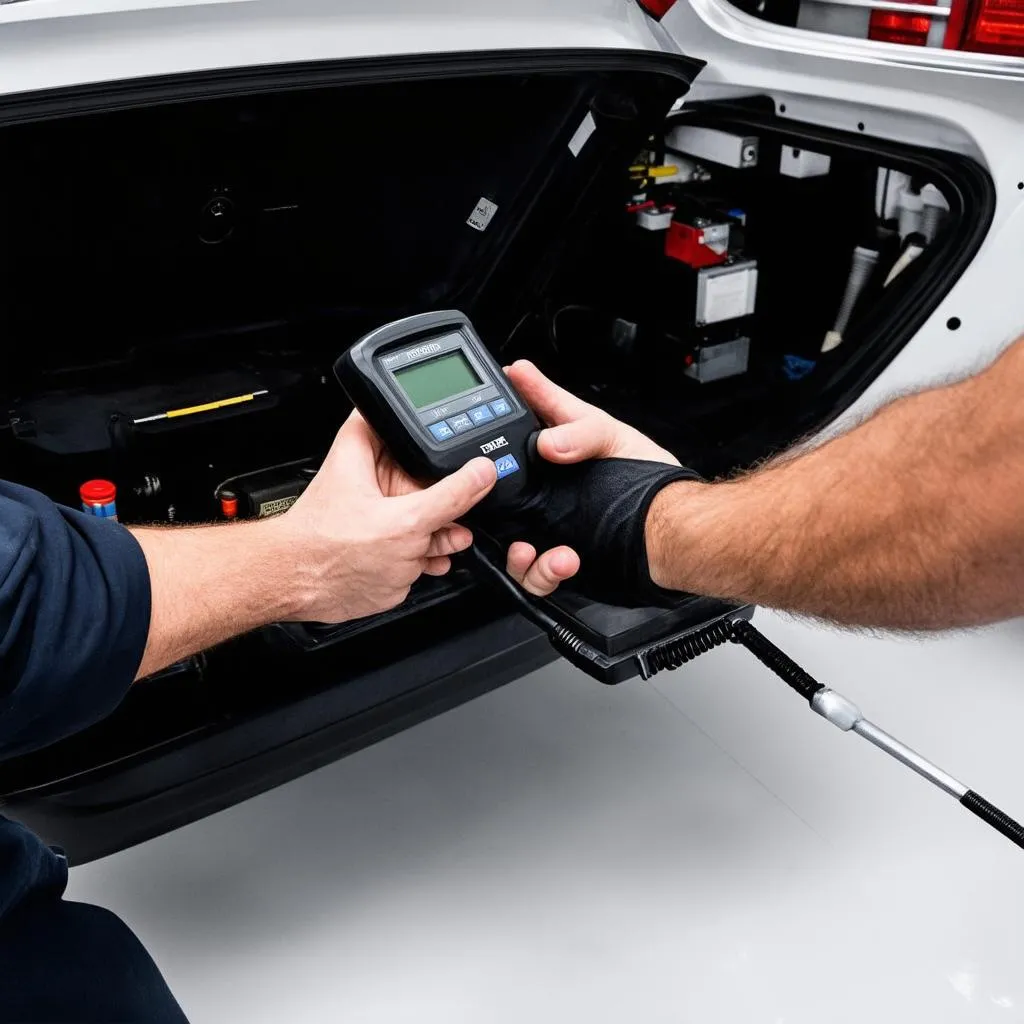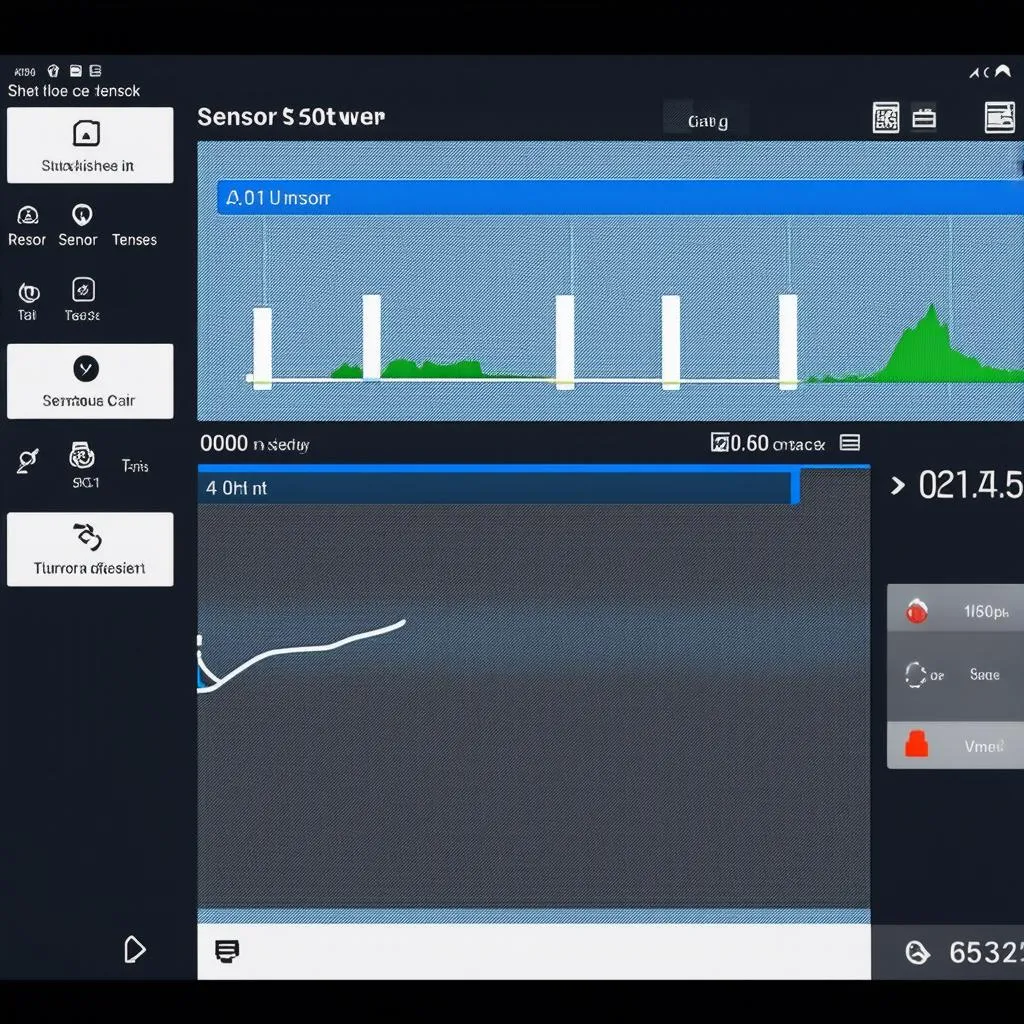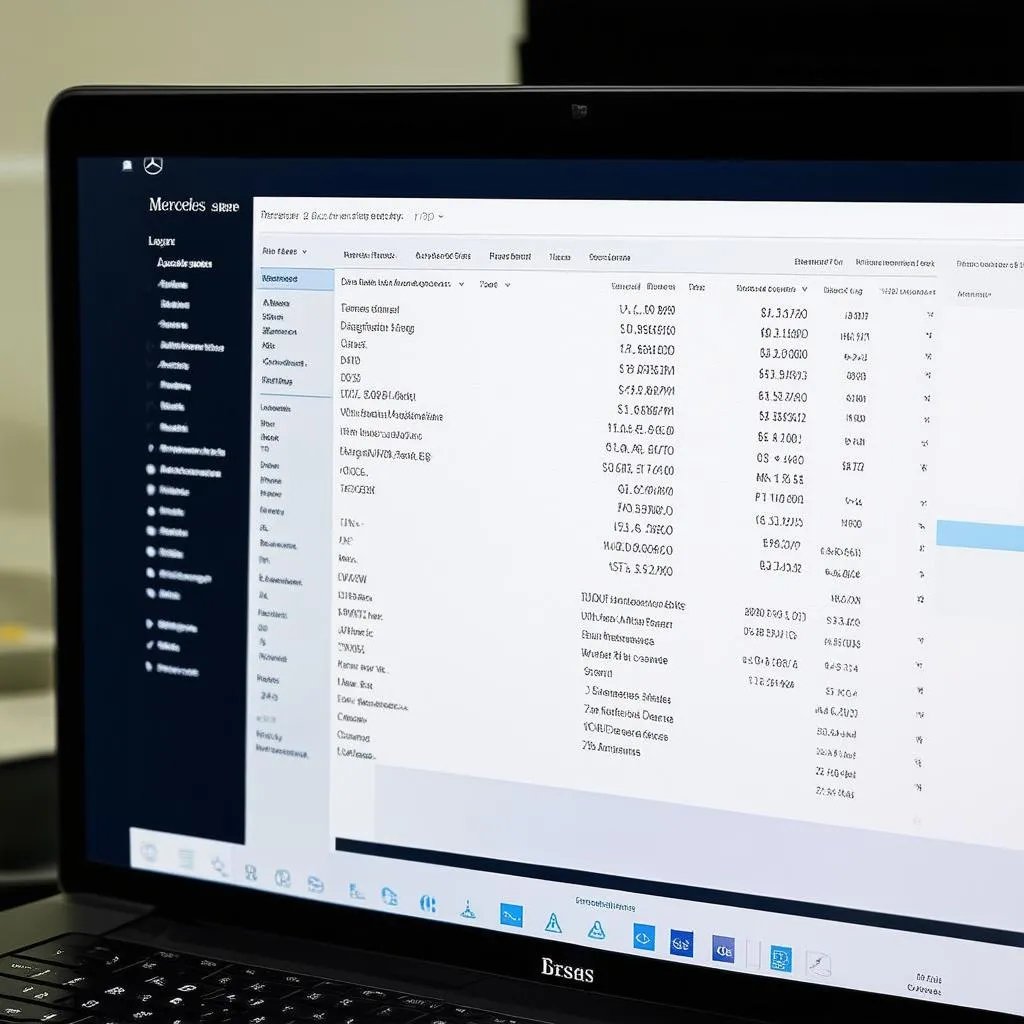Owning a Mercedes-Benz is a dream come true for many. The sleek design, powerful engine, and luxurious interior create an unparalleled driving experience. However, even the most meticulously crafted vehicles can experience issues. That’s where a Mercedes OBD tool comes in. This sophisticated device acts as a direct line of communication with your car’s computer, allowing you to diagnose and potentially fix problems before they escalate.
Whether you’re a seasoned mechanic or a car enthusiast looking to delve deeper into your Mercedes, this comprehensive guide will equip you with everything you need to know about OBD tools and their invaluable role in maintaining your prized possession.
Understanding the Power of OBD Tools
OBD stands for On-Board Diagnostics. An OBD tool, also known as an OBD scanner or code reader, is a handheld device that plugs into your Mercedes’ OBD-II port. This port, typically located under the dashboard on the driver’s side, grants access to the vehicle’s Engine Control Unit (ECU).
The ECU is essentially your car’s brain, constantly monitoring various systems and sensors. When it detects a problem, it generates a Diagnostic Trouble Code (DTC), which is stored in its memory. An OBD tool retrieves these codes, translating them into readable information that sheds light on the issue.
Why Mercedes Owners Need an OBD Tool
You might be wondering, “Do I really need an OBD tool?” The answer is a resounding yes, especially for Mercedes owners. Here’s why:
- Early Problem Detection: OBD tools can detect problems in their early stages, even before you notice any symptoms. This allows for timely intervention, potentially preventing costly repairs down the road.
- Accurate Diagnosis: Forget the days of relying solely on guesswork or expensive trips to the mechanic. An OBD tool provides accurate diagnostic information, empowering you to make informed decisions about your car’s maintenance.
- Cost Savings: By identifying issues early on and gaining insights into their nature, you can potentially save hundreds, if not thousands, of dollars on unnecessary repairs or misdiagnoses.
- Enhanced Control: An OBD tool puts you in the driver’s seat, literally! You’ll have a deeper understanding of your Mercedes’ health and performance, allowing you to address issues proactively.
Choosing the Right Mercedes OBD Tool
Navigating the world of OBD tools can feel overwhelming, especially with the abundance of options available. Here are key factors to consider when selecting the ideal tool for your Mercedes:
- Compatibility: Ensure the OBD tool is compatible with your specific Mercedes model year. Mercedes vehicles manufactured after 1996 are typically OBD-II compliant.
- Functionality: OBD tools range from basic code readers to advanced scanners with comprehensive diagnostic capabilities. Consider your needs and technical expertise when making a choice.
- User-friendliness: Opt for a tool with an intuitive interface, easy-to-understand menus, and clear instructions.
- Additional Features: Some OBD tools offer additional features like live data streaming, smog test readiness checks, and the ability to reset service lights.
 Mercedes OBD Tool
Mercedes OBD Tool
Common Mercedes Fault Codes and Their Meanings
Here are some frequently encountered Mercedes fault codes and their potential interpretations:
- P0171: System Too Lean (Bank 1) – This code often indicates an issue with the air/fuel mixture, possibly due to a vacuum leak, faulty oxygen sensor, or fuel injector problem.
- P0420: Catalyst System Efficiency Below Threshold (Bank 1) – This code suggests a problem with the catalytic converter, which might require replacement.
- P0300: Random/Multiple Cylinder Misfire Detected – This code indicates engine misfires, potentially caused by faulty spark plugs, ignition coils, or fuel injectors.
Expert Insight: “Understanding the meaning behind fault codes is crucial,” says automotive engineer Dr. Emily Carter, author of “The Complete Guide to Automotive Diagnostics.” “It allows car owners to grasp the severity of the issue and seek appropriate solutions.”
Tips for Using a Mercedes OBD Tool
- Locate the OBD-II Port: As mentioned earlier, the port is usually located under the dashboard on the driver’s side.
- Turn the Ignition On: Turn the ignition to the “on” position but do not start the engine.
- Connect the OBD Tool: Plug the OBD tool into the port.
- Read the Codes: Follow the tool’s instructions to read the stored fault codes.
- Interpret the Codes: Use the tool’s manual or online resources to understand the meaning of the codes.
- Clear the Codes: After addressing the issue, you can use the OBD tool to clear the codes.
Beyond Diagnostics: OBD Tools and Performance
Beyond diagnostics, some advanced OBD tools offer features that can enhance your Mercedes’ performance:
- Live Data Streaming: Monitor real-time data from various sensors, such as engine speed, coolant temperature, and oxygen sensor readings. This data can be invaluable for performance tuning and monitoring your car’s vital signs.
- Performance Tests: Conduct acceleration tests, measure horsepower and torque, and assess other performance metrics.
 Car Diagnostic Software
Car Diagnostic Software
FAQs About Mercedes OBD Tools
Q: Can an OBD tool fix my Mercedes?
A: While an OBD tool can’t physically repair your car, it empowers you to diagnose the issue accurately, enabling you to determine the necessary repairs.
Q: Are OBD tools universal?
A: Most OBD tools are compatible with OBD-II compliant vehicles, including Mercedes models manufactured after 1996. However, it’s essential to double-check compatibility before purchasing.
Q: Can I use an OBD tool on other car brands?
A: Yes, OBD-II compliant tools are generally compatible with most car brands manufactured after 1996.
Q: Is it legal to use an OBD tool?
A: Yes, using an OBD tool is legal. However, it’s crucial to adhere to local regulations regarding vehicle modifications.
Conclusion
A Mercedes OBD tool is an indispensable tool for any owner looking to take control of their car’s maintenance and unlock its full potential. By providing access to your Mercedes’ inner workings, these devices empower you to diagnose problems early on, potentially saving you time, money, and frustration.
For further assistance in selecting the right OBD tool for your Mercedes or for any car diagnostic needs, don’t hesitate to contact the experts at CARDIAGTECH.
Remember, knowledge is power. Equip yourself with a Mercedes OBD tool and embark on a journey of confident and informed car ownership.

